Microcurrent tools are kind of like skin care magic wands. I pull mine out the morning after a night of overindulging and it instantly relieves the puffiness I notice under my chin after one too many drinks. When I’m tired, it brightens my dull skin. I’ve even tried it on my sister, who swore that it made her cheekbones look more sculpted after just one use.
For years, I’ve used the NuFace Mini to help give my skin a boost when it needs it, but Ziip recently sent me its popular (and expert-recommended) Halo device to try. So, for anyone who is curious to know how they compare before potentially making the investment, I’m sharing my thoughts on both devices below.
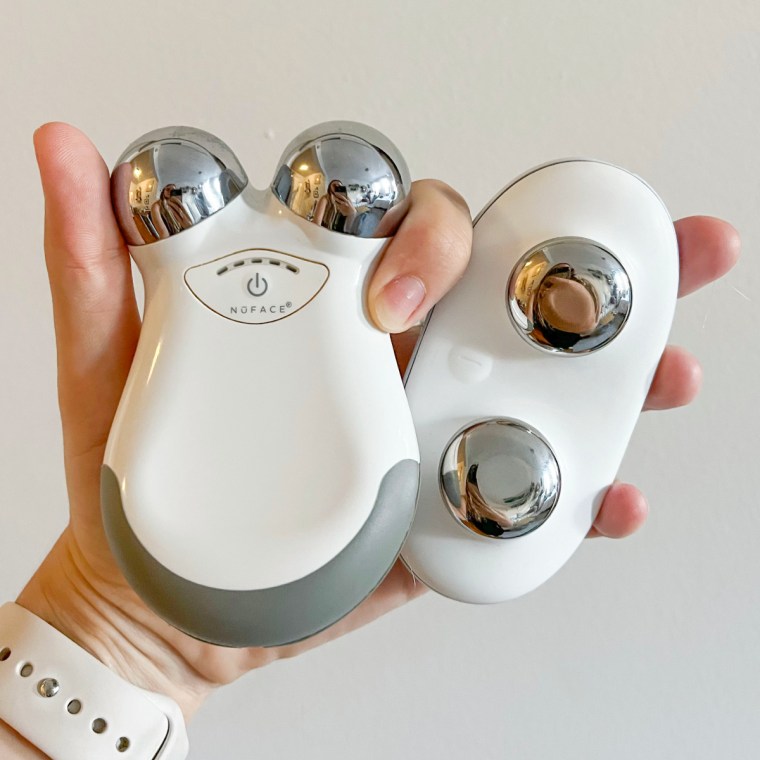
How I tested
I have been using the NuFace Mini Classic for over two years and pulled from my previous experiences with the device for my review. I have been using the Ziip Halo off and on for the last three months. The below before and after photos were taken on separate days, and for each one, I used aloe vera gel as a conductor.
All of the results reported were from individual uses, but the brands recommend that you use each device regularly to see the best results.
Best for: Beginners
The NuFace Mini is designed to be used on your face and neck. It uses microcurrent technology, sending a low-level electrical current through your skin down to the facial muscles to help lift and tighten your skin, the brand says, providing both instant and long-term results.
The NuFace Mini Classic is actually an older option (I bought it back in 2022), but the brand has a newer Mini+ device, a full-sized Trinity device as well as additional gadgets that are made to target specific areas, like the $195 NuFace Fix wand for the lines around your lips and eyes or the $399 NuBody device to tone skin all over.
Here’s how it works: To use it, the brand suggests cleansing the skin and then slathering on the Gel Activator, which is designed to help conduct the microcurrents to your skin and muscles. I ran out of the formula a while ago and didn’t want to shell out the $35 on a new bottle, so I use aloe vera gel (I saw a couple of TikTok videos where people say that it works similarly and I’ve found that to be true).
The first time I tried it, I followed a tutorial on the NuFace site and was able to get the hang of it quickly. You start on your neck, gliding across and upward, switching to the next spot when you hear it beep. You continue up your face, gliding across and upward on your cheekbones and then up your forehead, before moving onto the next side and then repeating the process. It has a built-in timer, so it will automatically shut off after five minutes.
If you use enough of the gel, you actually won’t feel the currents, and if you start to feel some small prickles on your skin, that usually means you need to apply more. (Don’t worry, even when you can feel it, it’s not painful at all.) However sometimes, when I’m focusing on the area around my lips, I get a metallic taste in my mouth.
After a five-minute session, there are a few things that I typically see. The biggest difference tends to be in my jawline (my biggest problem area), I notice that it looks slightly more defined and generally less puffy, especially under my chin. I also see a bit more definition at the tops of my cheekbones, my dark circles are slightly less pronounced, my eyes look more open and my eyebrows are slightly lifted.
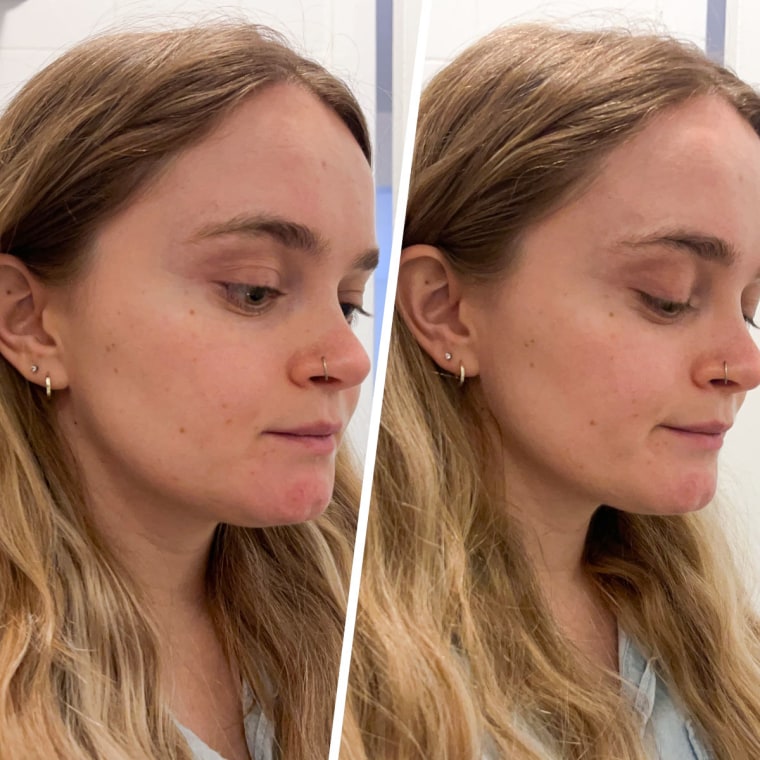
You can switch between three different intensity levels, but I rarely use anything less than the highest setting so I can get maximum effect. Though it’s nice that the device has the different levels built-in, for those who may want to work their way up or get used to the feeling of the device before going to the highest setting.
The app and the website also have more tutorials that you can try, focusing on specific areas like the neck or cheekbones, where you hold the device over an area, like the cheekbone, instead of gliding. I tend to use this method when there’s an area that’s giving me trouble, like puffiness under my chin or dark circles under my eyes, that I want to spend more time focusing on.
The battery life is pretty impressive — I’ve been using it off and on since I first got it years ago and have yet to have to charge it.
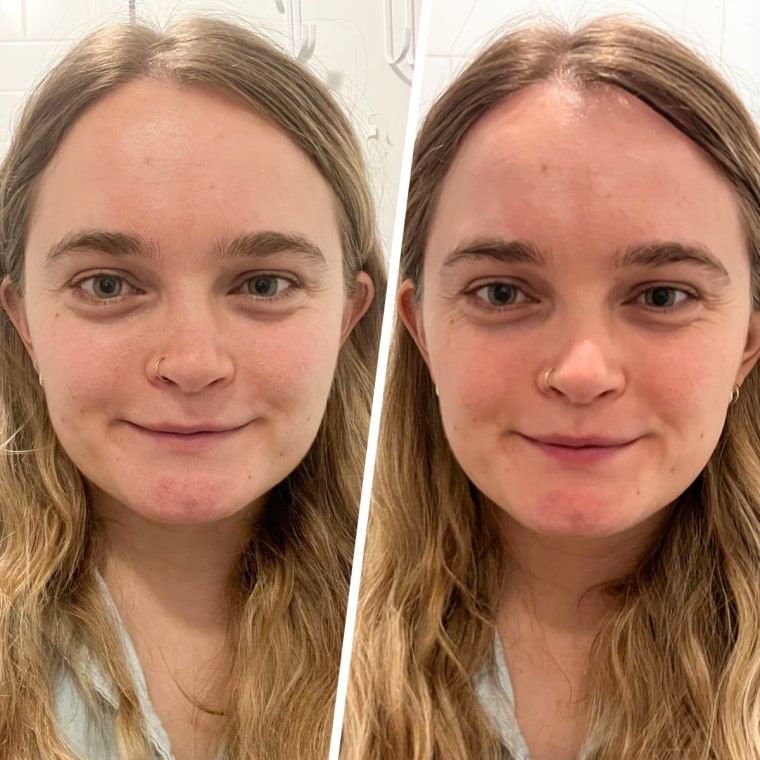
Best for: The skin care obsessed

I first heard about the ZIIP Halo while researching the microcurrent device trend a couple of years ago. Both estheticians that I spoke to recommended the device, so I was excited to try it.
Much like the NuFace, the ZIIP Halo is designed to be used on your neck and face. Along with microcurrents, the device uses nanocurrents, which the brand says are much softer and mimic your body’s natural currents to help with cell renewal and repair.
The process is basically the same as using the other device. You start by applying the conductor gel — the brand actually has a few different formulas available, including and but, again, I just used an aloe vera gel. Then, using the same upward and outward sweeping motions as I used with the other device, I’ll start on my neck and move up to my cheeks, under eyes and forehead, moving to the next section each time that it vibrates. The device has a built-in four-minute timer and it beeps in the middle of the session to let you know when it’s time to move to the other side of your face.
The benefits that I see are pretty similar to the NuFace, and after a session, I typically find that my skin feels tighter, especially in the chin and jaw area, my brows are lifted, lines and bags are less noticeable and there is generally more definition in my face.

You can sometimes feel this device working as you’re using it, but again, it’s typically only when you haven’t applied enough gel. And it feels just like a slight tingling sensation in your inner facial muscles, it’s never painful.
The ZIIP Halo is smaller, lighter and fits perfectly in your hand, so it’s easy to use. I love to bring a microcurrent device with me while traveling, to help counteract the effects of missed sleep and larger meals, and the smaller size of the device makes it easier to pack.
On ZIIP’s app, you’ll also find plenty of videos to follow, including ones to target specific areas, like jowls or lips and full facials. Each one will connect directly to your device to help guide you through the treatment. There are also plans, which range from seven to 30 days, for things like “wedding prep” or “glass skin” to help you stay on top of treatments and follow the best ones to meet your goals, which makes it easy to stay on top of your routine and get the most from the device.
I’ve been using the Ziip Halo off and on for a couple of months now and have also had yet to have to charge it.
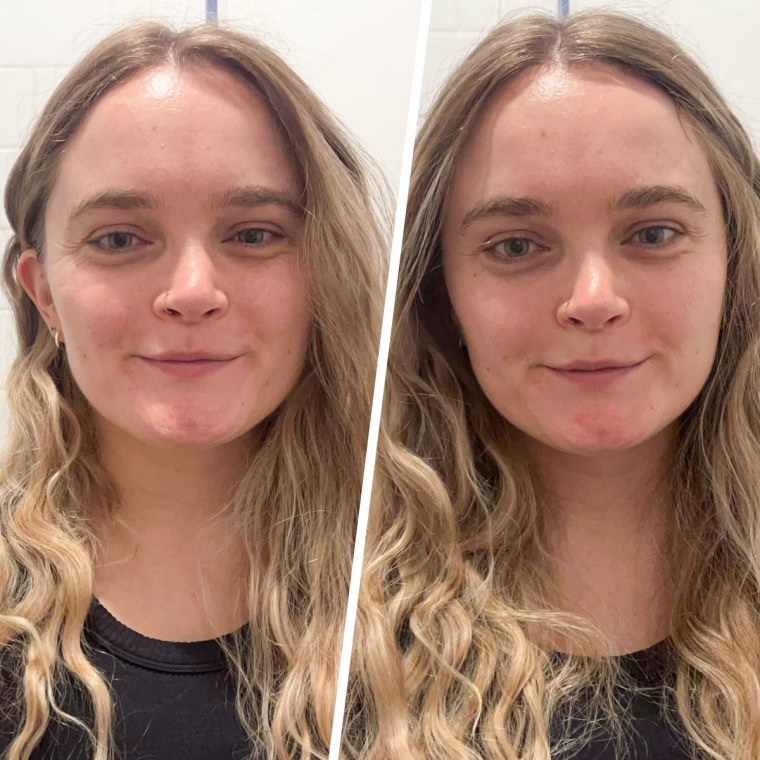
Best overall: NuFace Mini
Both devices are pretty easy to use and yield similar results, so naming a winner was pretty tough. And, if I’m being honest, Ziip’s results actually tend to be slightly more noticeable and the device is easier to use, from an ergonomic standpoint. But the differences are so minimal that NuFace is likely the better choice for many people, especially those new to microcurrent therapy, due to its much lower price tag.
While you should really use the app to get the full experience from the Ziip Halo (and it’s super helpful and a cool addition for those dedicated to their skin care routine) the NuFace is also easier to use on its own, for those who might not want to download an extra app.
Overall, both devices can make a great addition to any skin care routine, especially for those with dull skin or aging concerns.
What are the benefits of microcurrent devices?
According to experts that we previously spoke to, microcurrent devices can help stimulate elastin and collagen to make your skin look smoother and brighter. They also stimulate the facial muscles to help your skin appear lifted and tighter.
One expert even noted that they can be a good tool for those who might be reluctant to try more invasive options, like Botox and fillers.
Why trust Shop TODAY?
Emma Stessman is a writer for Shop TODAY. She has over a decade of experience in digital media and has been on the team for over four years. She has interviewed countless experts for her coverage of beauty trends, wellness products, skin care ingredients and more. At Shop TODAY, she often does in-depth testing, trying popular brands across categories, including Brooks vs. Hoka, The Pink Stuff vs. Bar Keepers Friend and more.
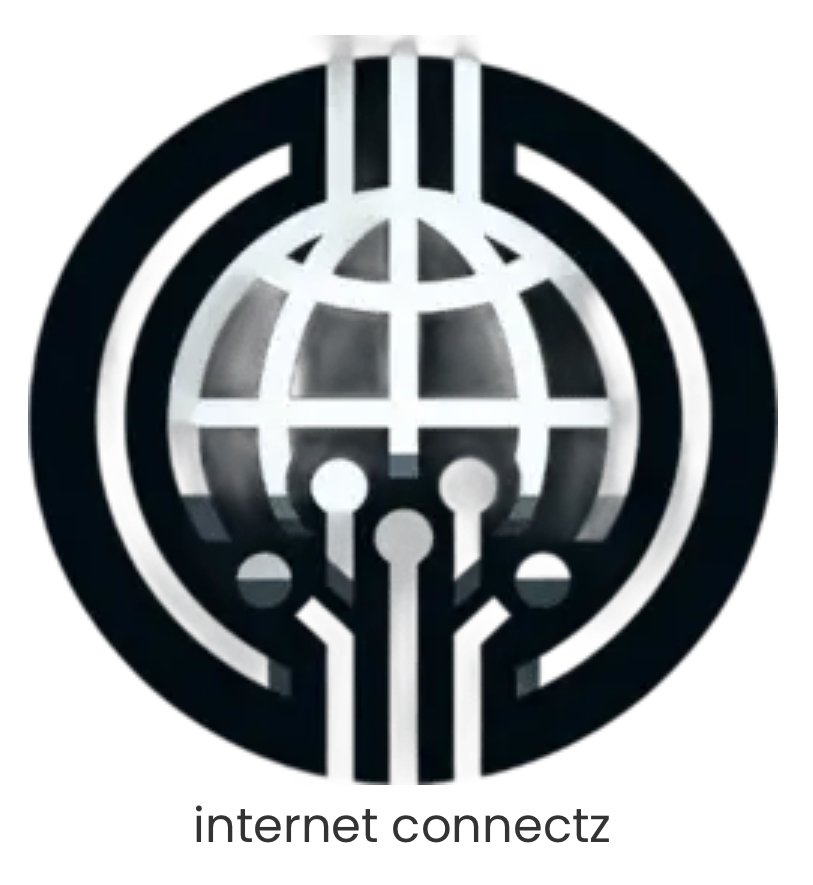


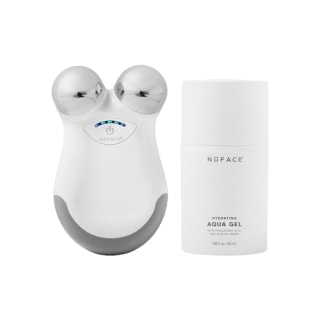
Leave a Reply